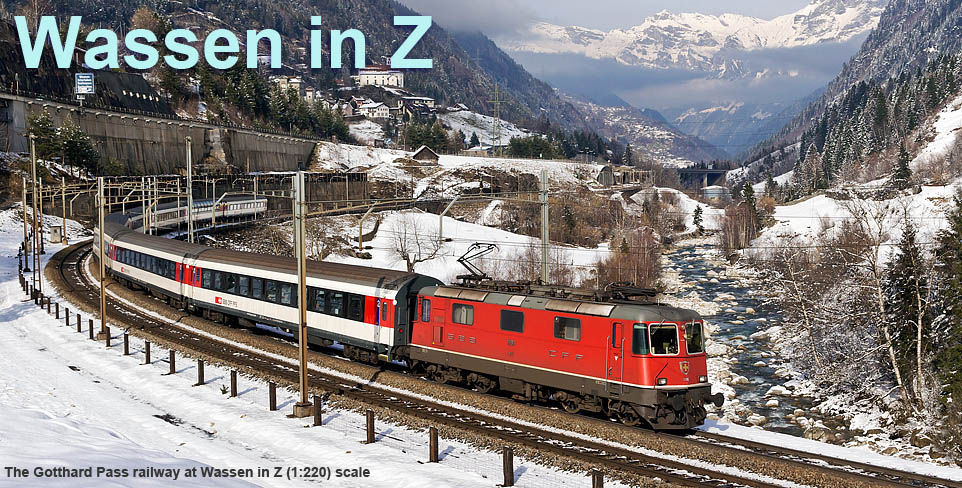Gotthard: Queen of Alpine Railways
Since I'm on holiday too far away to be doing any more work on the layout for the next month, let me put in a plug for Klaus Eckert's "Gotthard" book, published by the good folks at VGB.
This is a wonderful collection of pictures, mostly taken in recent years, that cover both north and south sides of the Pass.
The images themselves are absolutely superb. Well taken 'trains in the landscape shots' - nicely lit trains in great locations, well processed and well printed to show off the scenic majesty of the line. There is a small section covering the 'new' tunnel being built, another on preserved equipment, and a few shots sprinkled throughout that go back up to 20 years including green locos, the odd pair of snazzy Re460s on freights, and a few Ae 6/6s; but the book is heavily weighted toward pictures of trains in recent times.
I would recommend English speaking readers of my book report buy this tome for its pictures rather than the information contained between its covers. There is a little text introducing each chapter, and it may be a wonderful read, but alas I don't speak or read more than a few words of German... Fortunately the chapters are laid out in a north-south order and decent maps and lists of bridges/tunnels etc are provided, so if you have a working knowledge of the German words for "under", "left", "middle" etc, and stare at the decently-detailed captions for long enough, you can get the gist of what's going on.
Or you can open the book randomly and let the visuals do the talking.
This hardcover book has 44 pages, contains around 250 colour pics on lovely big 24cm wide by 33cm tall pages. Available from VGB. If you're in the area, the Hotel Gerig at Wassen has a copy that you can dribble over while you have a refreshing apfelwein or coffee. After I'd done this, I just had to get my own copy.
A stunning photographic record of the Gotthard in its final glory.












